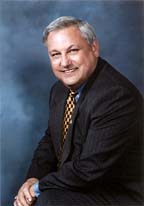An Eye on ROI

My company has discovered some key ways to address ROI in hospitals; hopefully they can be used by others as they address this critical issue.

Personnel costs
Our group designs large, integrated electronic security systems that include a multiple of technological disciplines, all of which are designed to improve the security posture of whatever type of facility is being addressed. But employing technology does not mean that jobs will have to be cut. We suggest that hospital security teams and management enhance their overall security program by re-deploying existing personnel to cover areas that perhaps have not, to date, been adequately protected.Electronic security equipment allows a security console officer – through the use of video, monitoring, audio contacts, and other security applications – to be in many places at one time. If one or two security officers are stationed at a central console and are able to assess situations before the deployment of a response team is necessary, a partial ROI has immediately been established because security is still in place even though the situation is being handled from the console.
A good example of this is late-night security at parking lots and structures. All parking facilities – whether they be structures or lots – should be well lighted, have security video coverage, and be equipped with strategically placed assistance stations with two-way audio circuits that can be heard throughout the lot when the console officer initiates an “all stations” transmission.
Likewise, we recommend that security personnel provide escorts for personnel walking out to the parking lot at, say, 2 a.m., but many times that is not humanly possible. The console officer makes it possible by activating an audio circuit in the area and announcing to the employee that they are on video and will be visibly followed to the car. This serves two purposes: the announcement alerts any perpetrators that a video system is in place, and the employee feels more secure knowing that someone is observing them. With a console officer in place, the hospital’s security program has the ability to implement more patrols and deploy quicker response units, making it immediately more effective.
Units of service
Many times security programs identify the scope of services but cannot document how often a service was performed and who benefited from that service.Our group helped one client devise an effective solution to this dilemma. Each function performed by the security team was documented and a cost factor was established for the service. Flat fees went for services like monthly video monitoring; but incidental services, such as access control transactions, had a fee, response teams had a fee, and so forth. Even though the dollar amounts were relatively small, they were tallied by the security management team at the end of each month and sent to accounting for interdepartmental charge-backs. These “small” numbers the security services developed were astounding! They proved that the security program was, on paper, making a profit!
Think about it: How many transactions does your access control systems manage a day, and what would be your department’s return at 10 cents per transaction? If you need to establish the number, find out what access control central stations charge per transaction. You may be surprised at their costs!
But even with this unit-cost program in place, our client’s budget is – as at all hospitals – very tight; but the security director now has justification when requesting the necessary funds to maintain, and if possible, enhance the program.
In reality, the eye-opener is not so much the monies identified, but the realization by administration personnel of just how much the security team was contributing to keeping the hospital sailing on an even keel. The program is still in place, and the hospital’s administration looks forward to seeing these numbers on the balance sheet every quarter. The program also provides a vehicle from which management can identify effective versus ineffective efforts, thus providing far better insight for the decision-makers as they ponder security program enhancements or changes.
Internal theft
This is still one of the major problems faced by medical facilities. Too often, visitors, employees, contractors, vendors and service personnel steal, and in some instances, the numbers are very high.
Enhancing your security program to ensure tighter security on hospital exits is always an effective application. This involves the use of not only access control, but video surveillance, audio circuits and egress-control locking devices, if they are acceptable to the fire marshal in your particular area. Otherwise, the use of local alarms with console monitoring and video coverage, both inside and outside, will at least develop an evidentiary audit trail of the individual(s) violating the egress program, and will allow for disciplinary actions.
It is difficult to stop internal theft in hospitals, but with a console officer, those re-deployed security officers can now cover employee entrances and exits. It is extremely important that the security director have the loss numbers from all departments on a monthly or quarterly basis. This will allow for a comparison to be made regarding pre-protection as opposed to post-protection application evaluations.
Last, but definitely not least, it is vital to get employees’ opinions on internal theft, as well as their recommendations on how to address the problem. Employees need to realize that the security department is serious. If they understand how security affects their hospital’s bottom line, feedback could be very positive. The employee is in the trenches and sees what goes on every day in areas where security may only visit once a day, or even less frequently. Their input, if properly solicited, could prove to be invaluable to the program
Looking for a reprint of this article?
From high-res PDFs to custom plaques, order your copy today!






